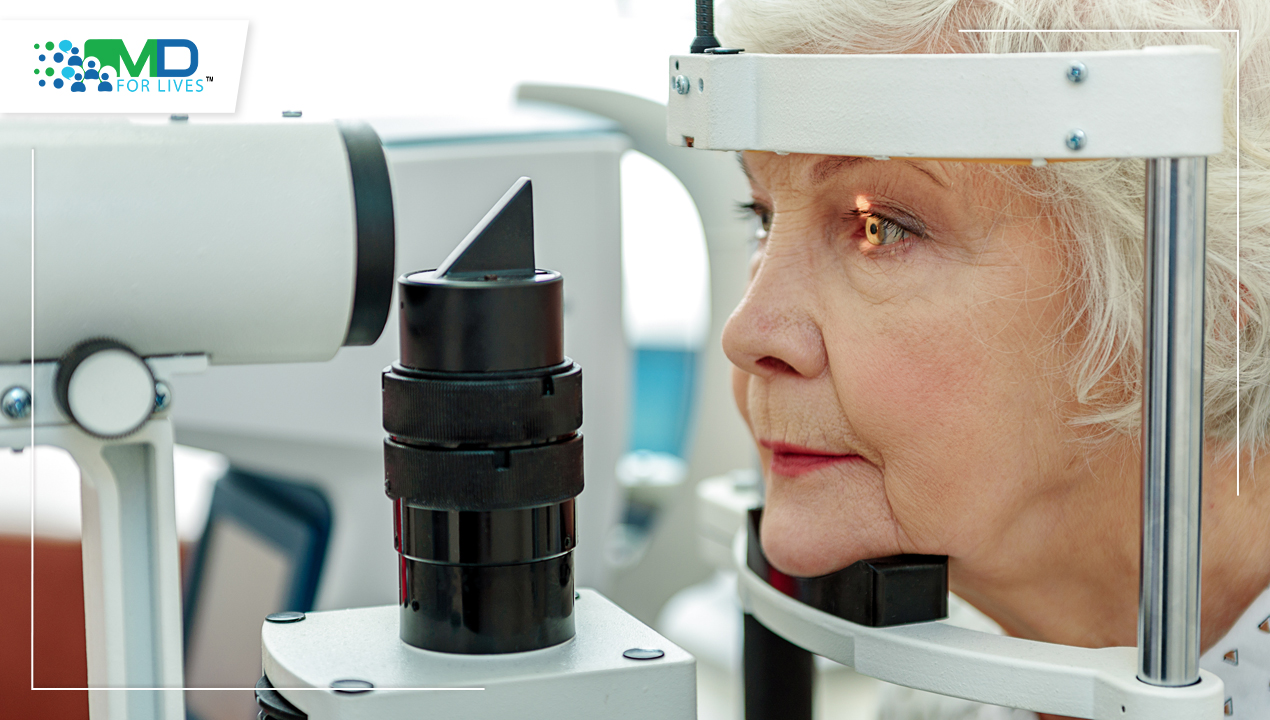Scientists at Karolinska Institutet and St. Erik Eye Hospital find new ways to treat glaucoma, a common neurodegenerative disease.
A recent study published in the journal PNAS demonstrated the protective effects of pyruvate and rapamycin against neurodegeneration in animal models of glaucoma.1 Another study published in Redox Biology suggests nicotinamide, the amide of vitamin B3 can be a future neuroprotective therapy in glaucoma.2
Glaucoma – Multifactorial Neurodegenerative Disorder
Glaucoma, the leading cause of irreversible blindness is estimated to affect approximately 80 million people globally.1 Glaucoma, the chronic, progressive optic neuropathy is characterized by degeneration of retinal ganglion cells (RGCs) and their axons, and typical visual field loss. The major risk factors include age, intraocular pressure (IOP), and genetic predeposition. Other risk factors include diabetes, hypertension, race – particularly blacks, cigarette smoking, etc.3 The elevated IOP, the modifiable risk factor is the primary contributor to glaucoma. The increased IOP damages the optic nerve, resulting in the destruction of retinal ganglion cells (RGC) and loss of vision.
IOP lowering medications, laser therapy or surgical interventions are the common treatment methods to reduce the progressive neurodegeneration and loss of visual field. Despite treatment efforts, patients still experience further optic nerve damage, at least 42% of treated patients progress to unilateral vision loss.2 There is a clear need to develop new neuroprotective strategies.
Pyruvate and Rapamycin for Glaucoma
Studies suggest metabolic disruption and mitochondrial dysfunction occur before glaucomatous neurodegeneration.2,4 Age and intraocular pressure-related metabolic disturbances render RGC susceptibility to neurodegeneration. Strategies to overcome metabolic and mitochondrial deficits appeared promising in cell and animal studies.
In the new study, researchers demonstrated that disturbed glucose and pyruvate levels, and elevated intraocular pressure can disrupt the metabolism beyond age-related changes and found that pyruvate supplementation can protect against neurodegeneration in glaucoma.
The study revealed that the levels of retinal pyruvate, the end product of glycolysis that plays a prominent role in diverging energy-producing pathways decline with increasing IOP. Depletion in retinal pyruvate level can lead to RGC degeneration. Researchers assessed the effect of pyruvate in cultured retinal neurons and mouse models. The pyruvate treatment reduced the onset of neurodegeneration, prevented RGC loss at old age, increased RGC/neuronal survival, and showed significant neuroprotection, both prophylactically and as an intervention.1 In addition, pyruvate has shown a protective effect against PARP activation and oxidative stress. Oxidative stress that increases with age can stimulate neuroinflammation in glaucoma.5
The researchers also studied the link between the regulation of mTOR (the master regulator of metabolism) and glaucoma. mTOR activation occurs early in glaucoma1. mTOR inhibition can benefit neurodegeneration, can protect neurons from apoptosis.6 Researchers found the drug rapamycin that inhibits mTOR signaling protected RGC and significantly prevented glaucomatous neurodegeneration.
The study demonstrated the glucose and pyruvate metabolism disruption in glaucoma and the neuroprotective effects of pyruvate and rapamycin.1
Nicotinamide for Glaucoma
Previous studies revealed the age-dependent decline of retinal nicotinamide adenine dinucleotide (NAD) levels (NAD plays a critical role in mitochondrial function). The decline in retinal NAD levels increases the susceptibility of the aging neurons/retinal ganglion cells to glaucomatous neurodegeneration during elevated intraocular pressure.2
Studies showed that nicotinamide protects RGC neurodegeneration both interventionally and prophylactically.4 The NAD decline was prevented by the administration of dietary supplement nicotinamide (amide of vitamin B3) or by intravitreal viral gene-therapy – driving expression of Nmnat1, (a key NAD synthesizing enzyme) that prevented age-related changes in gene expression and reduced the vulnerability to glaucoma.7 Nicotinamide as a treatment for glaucoma was investigated in various trials including NCT03797469,8 in which glaucoma patients who received nicotinamide supplements showed significant visual recovery.2
These above findings led the researchers to investigate nicotinamide further for its neuroprotective effects against glaucoma in animal and cell models. Researchers demonstrated numerous neuroprotective effects of nicotinamide including the prevention of RGC somal, axonal and dendritic degeneration, prevention of metabolic disruption induced by ocular hypertension. Nicotinamide also increased oxidative phosphorylation and increased mitochondrial size and motility. Nicotinamide protected RGCs from the metabolic crisis, buffers and prevents metabolic stress caused during glaucoma pathogenesis.
These findings support nicotinamide treatment as a neuroprotective therapy for human glaucoma, a key step to move the treatment from lab to clinic.
The above studies give hope for new treatment strategies for glaucoma.






